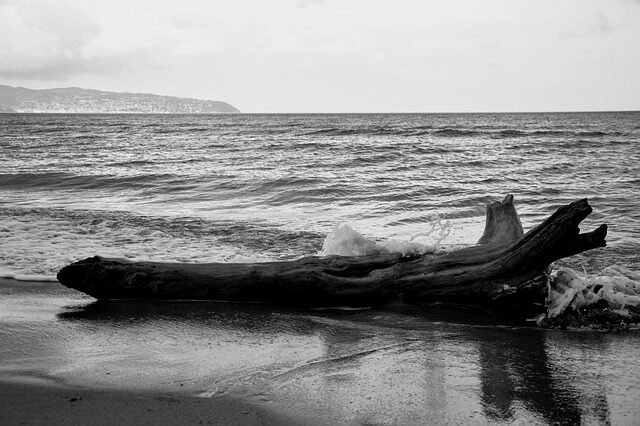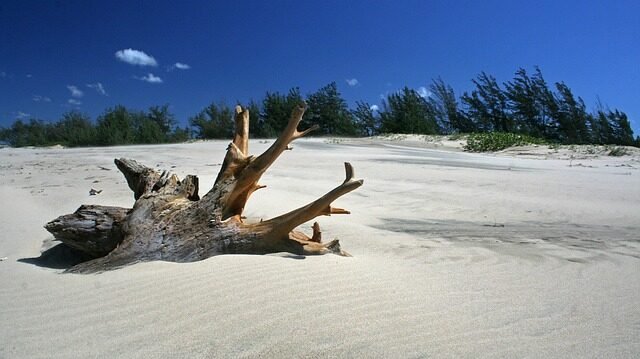Imagine walking along the serene shoreline of a picturesque beach. The sand is warm beneath your feet, and the gentle waves caress the shore. As you stroll, your eyes are drawn to a fascinating sight – a collection of Cedar Driftwood scattered along the beach. The rich hues and intriguing shapes of this natural treasure captivate your attention, inviting you to explore their unique beauty further. In this article, we will immerse ourselves in the enchanting world of Cedar Driftwood, delving into its origin, characteristics, and the wonderful ways it can be incorporated into our homes and lives. Get ready to embark on a journey uncovering the wonders of Cedar Driftwood.
What is Cedar Driftwood?
Definition
Cedar driftwood refers to driftwood that comes from cedar trees. Driftwood is wood that has been washed up on a shore, typically by a body of water such as a river or an ocean. Cedar driftwood specifically comes from cedar trees, which are known for their beautiful and durable wood. This type of driftwood is prized for its unique appearance and is often used in various decorative and functional applications.
Types
There are several types of cedar driftwood, each with its own distinct characteristics. Western red cedar driftwood is one of the most common types and is known for its vibrant red and brown colors. It often has a twisted and gnarled appearance, making it a popular choice for decorative purposes. Yellow cedar driftwood, on the other hand, is lighter in color and may have a smoother texture. It is often used for more delicate and intricate designs. Other types of cedar driftwood, such as Alaskan cedar driftwood or eastern red cedar driftwood, can also be found, each with their own unique features.
Features of Cedar Driftwood
Appearance
Cedar driftwood is known for its stunning appearance. It often has a weathered and worn look, with interesting twists, knots, and unique shapes. The natural aging process gives cedar driftwood a distinct character that is highly sought after in home decor and artistic projects. Its irregular and rugged shapes make it a versatile material for creating eye-catching centerpieces or accent pieces.
Texture
The texture of cedar driftwood can vary depending on the specific type and age of the wood. Some pieces may have a rough and weathered surface, while others may be smoother to the touch. The texture adds to the rustic charm of cedar driftwood, making it a popular choice for adding a natural and organic feel to any space.
Color
Cedar driftwood comes in a range of colors, ranging from deep reds and browns to lighter shades of yellow and beige. The natural hues of cedar wood are enhanced by the weathering process, giving each piece its own unique coloration. The rich and warm tones of cedar driftwood make it a popular choice for creating a cozy and inviting atmosphere in any interior or outdoor setting.
Aroma
One of the distinctive features of cedar driftwood is its pleasant and aromatic scent. The natural oils present in cedar wood give off a sweet and woodsy fragrance that can help create a calming and serene environment. The aroma of cedar driftwood can be especially enjoyed when used in indoor settings such as living rooms or bedrooms, where it can add a touch of nature to the space.
Uses of Cedar Driftwood
Home Decor
Cedar driftwood is widely used in home decor due to its natural beauty and artistic appeal. It can be used as a centerpiece on a dining table, mantelpiece, or coffee table to add a rustic and worldly touch. Its unique shapes and textures make it a great conversation starter. Cedar driftwood can also be incorporated into wall art, such as sculptures or hanging pieces, to create a visually interesting focal point.
Aquariums and Terrariums
Cedar driftwood is popular among fish and reptile enthusiasts for creating naturalistic habitats in aquariums and terrariums. Its weathered appearance and natural texture mimic the look of underwater or forest environments, providing an attractive and functional element to the habitat. However, it is important to be cautious when using cedar driftwood in aquariums as some treatments or finishes may be toxic to aquatic life.
Garden and Landscaping
In garden and landscaping design, cedar driftwood can be used to create unique and visually appealing features. It can be incorporated into garden borders, pathways, or placed strategically among plants and flowers to add an organic and natural element. Cedar driftwood’s weathered appearance blends well with outdoor greenery, creating a harmonious and inviting outdoor space.
Outdoor Furniture
Cedar driftwood is also suitable for creating outdoor furniture pieces that are both functional and aesthetically pleasing. From benches and chairs to tables and planters, cedar driftwood furniture adds a natural and rustic charm to any outdoor living area. Its durability and resistance to decay make it a practical choice for outdoor use.
How to Select Cedar Driftwood
Size
When selecting cedar driftwood, consider the size and scale of the project or space in which it will be used. Large and dramatic pieces can serve as statement pieces in a room, while smaller and more delicate pieces may be suitable for tabletop displays or smaller projects. It is important to ensure that the size of the driftwood is proportionate to the intended purpose and can be easily accommodated in the desired space.
Shape
The shape of cedar driftwood can greatly impact its visual appeal and functionality. Choose pieces with interesting twists, knots, or branches to add visual interest and depth to your project. Consider the overall shape of the driftwood and how it will complement the surrounding elements or other decorative items. The shape of the driftwood should be in harmony with the overall aesthetic of the desired space or project.
Condition
Inspect the condition of the cedar driftwood before purchasing or using it. Look for signs of rot or decay, as this can affect the longevity and structural integrity of the wood. Additionally, check for any signs of insect infestation or damage. It is important to select driftwood that is in good condition to ensure its suitability for the intended purpose and to prevent any potential issues in the future.
Caring for Cedar Driftwood
Cleaning
To clean cedar driftwood, gently brush off any loose debris or dirt using a soft brush or cloth. Avoid using harsh chemicals or abrasive cleaners, as they can damage the wood or strip away its natural patina. If necessary, you can rinse the driftwood with water and allow it to air dry. However, excessive exposure to water may cause the wood to deteriorate more quickly, so it is best to minimize direct contact with water.
Preservation
To preserve the appearance and durability of cedar driftwood, you can apply a clear varnish or sealant. This will help protect the wood from environmental factors, such as moisture and UV rays, that can cause it to degrade over time. Be sure to choose a varnish or sealant that is specifically designed for use on wood and follow the manufacturer’s instructions for application.
Display Tips
When displaying cedar driftwood, consider the overall aesthetic and theme of the space or project. Position the driftwood in a way that showcases its unique features and complements other decorative elements. You can pair cedar driftwood with plants, shells, or other natural materials to create an organic and harmonious display. Experiment with different arrangements and placements to find the most visually pleasing and balanced composition.
Where to Find Cedar Driftwood
Natural Sources
Cedar driftwood can be found in natural environments such as beaches, riverbanks, or forests.

Online Stores
There are numerous online stores that specialize in selling cedar driftwood. These stores often offer a wide variety of shapes, sizes, and types of cedar driftwood to choose from. When purchasing from online stores, it is important to read product descriptions and reviews to ensure the quality and authenticity of the driftwood. Additionally, consider factors such as shipping costs, return policies, and customer service before making a purchase.
Local Nurseries and Garden Centers
Local nurseries and garden centers may carry cedar driftwood, especially if they cater to customers interested in unique and natural garden decor. Visit these establishments and inquire about their selection of cedar driftwood. Local sources may offer the advantage of being able to physically inspect the driftwood and choose pieces that best suit your preferences or project requirements.
DIY Projects with Cedar Driftwood
Candle Holders
Create unique and rustic candle holders by using cedar driftwood as the base or centerpiece. You can place tea light candles or pillar candles on the driftwood, creating a warm and inviting atmosphere. Arrange different sizes and shapes of driftwood to create a visually interesting display.
Wall Art
Turn cedar driftwood into a stunning piece of wall art by arranging pieces in an abstract or structured pattern. You can attach the driftwood to a backing board or simply hang the pieces directly on the wall. The natural shapes and textures of the driftwood will create a visually captivating focal point in any room.
Plant Stands
Use cedar driftwood to create a one-of-a-kind plant stand for your indoor or outdoor plants. Arrange the driftwood pieces into a sturdy structure and secure them together using nails or screws. The natural beauty of the driftwood will add an organic and artistic touch to your plant display.
Coat Hangers
Transform cedar driftwood into unique and functional coat hangers. Attach hooks or knobs to the driftwood and mount it on a wall in your entryway or bedroom. Hang coats, hats, or scarves on the driftwood to keep them organized while adding a rustic and natural element to your space.
Safety Considerations
Beware of Splinters
When handling cedar driftwood, be cautious of splinters. The weathering process can cause the wood to become brittle, increasing the risk of splintering. Wear protective gloves when handling or working with driftwood to minimize the risk of injury. Additionally, be aware of any sharp or jagged edges that could cause cuts or scratches.
Avoid Toxic Treatments
Some cedar driftwood may have been treated with chemicals or finishes that can be toxic. When selecting or purchasing driftwood, ensure that it has not been treated with any harmful substances.

Frequently Asked Questions
Can Cedar Driftwood Be Used in Saltwater Aquariums?
Cedar driftwood is generally not recommended for use in saltwater aquariums. The natural oils present in cedar wood can leach into the water and negatively impact the quality and health of the aquatic environment. It is best to choose driftwood that is specifically labeled safe for use in saltwater aquariums.
How to Treat Cedar Driftwood for Aquarium Use?
If you wish to use cedar driftwood in freshwater aquariums, it is recommended to treat the wood before introducing it into the tank. Start by boiling the driftwood in water for several hours to remove any dirt, bacteria, or potential toxins. After boiling, allow the driftwood to cool and thoroughly dry before placing it in the aquarium.
Can I Use Cedar Driftwood for Reptile Tanks?
Cedar driftwood is generally not recommended for use in reptile tanks. The natural oils present in cedar wood can be harmful when ingested or inhaled by reptiles.

Conclusion
Cedar driftwood is a beautiful and versatile natural material that can enhance a variety of projects and spaces. Its unique appearance, texture, color, and aroma make it a popular choice for home decor, aquariums, gardens, and DIY projects. By carefully selecting and caring for cedar driftwood, you can enjoy its natural beauty and bring a touch of nature into your surroundings. Whether you use it as a centerpiece, wall art, or furniture, cedar driftwood is sure to add character and charm to any setting.